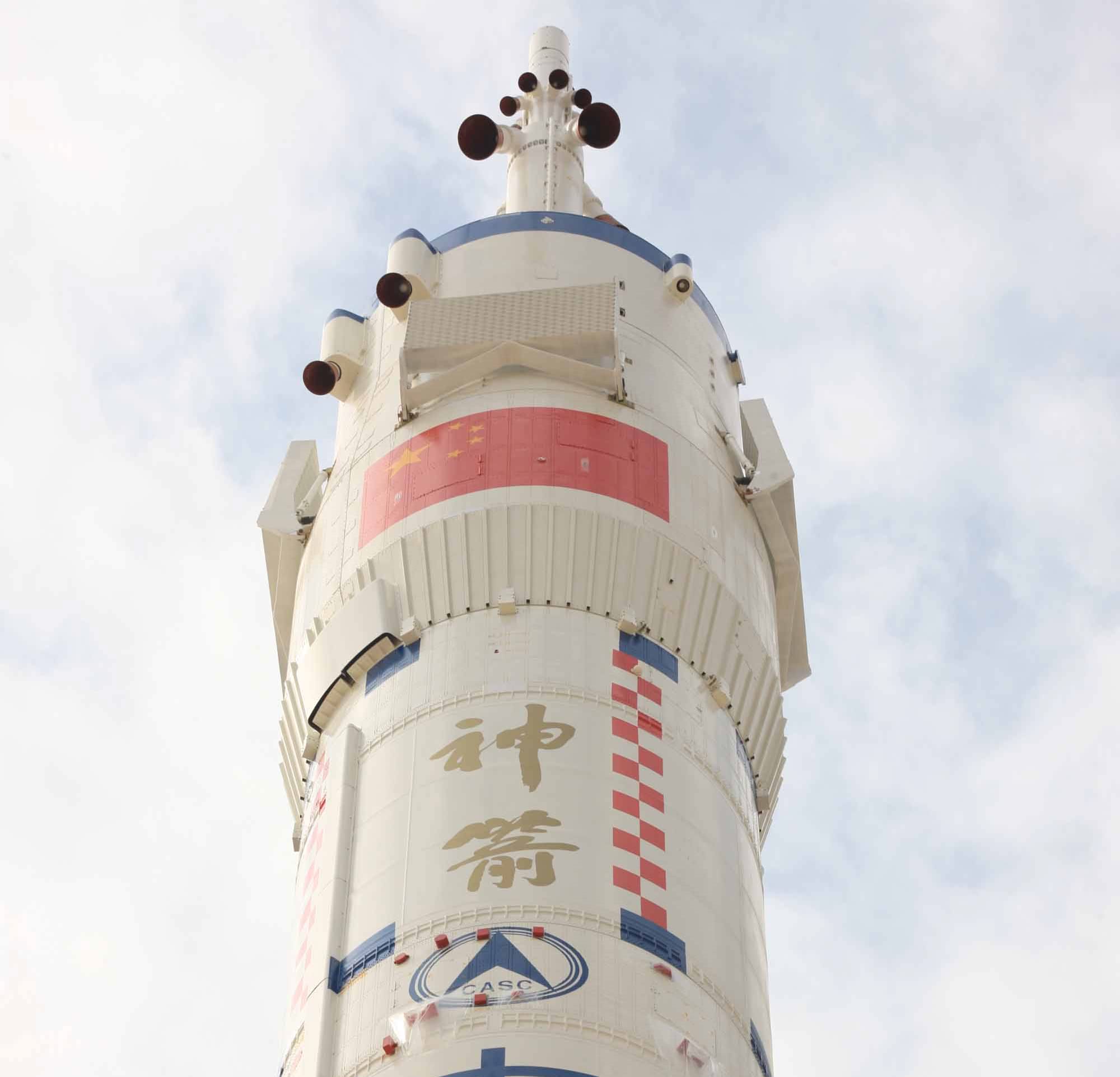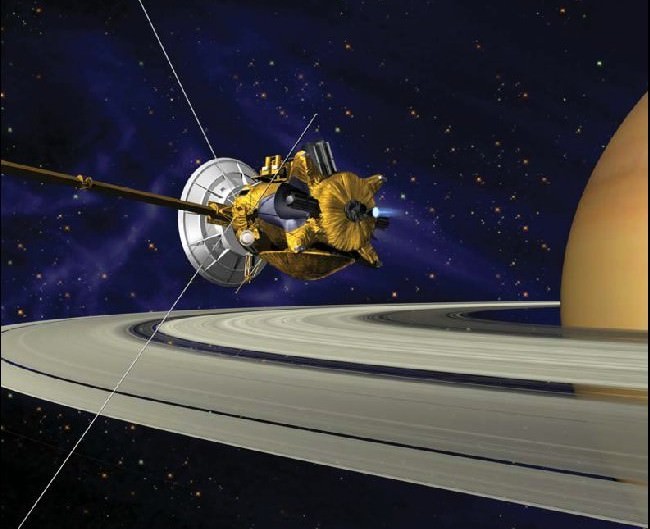The folks from UnmannedSpaceflight.com have been busy working on the new images of Phobos returned by Mars Express. Above, is an animation created by Daniel Machácek, who also colorized the images and processed them through some morphing software to make a seamless animation (via Emily Lakdawalla from the Planetary Blog), and below is another morphing animation by Daniel Brennan (via the Mars Express Blog)
Continue reading “Morphing Phobos”
New Looks at Phobos from Mars Express Flyby
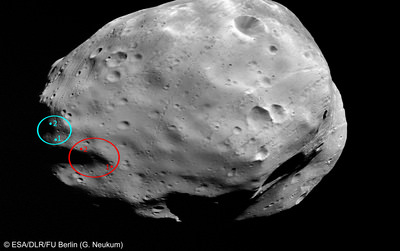
[/caption]
The Mars Express team released the images today from the close flyby the spacecraft made of Phobos on January 9. The images weren’t downloaded from Mars Express until Jan. 18, and then they were processed, so these are hot off the press. The team didn’t provide much explanation, but enjoy the images. There’s one 3-D view in the group, so grab your 3-D glasses.
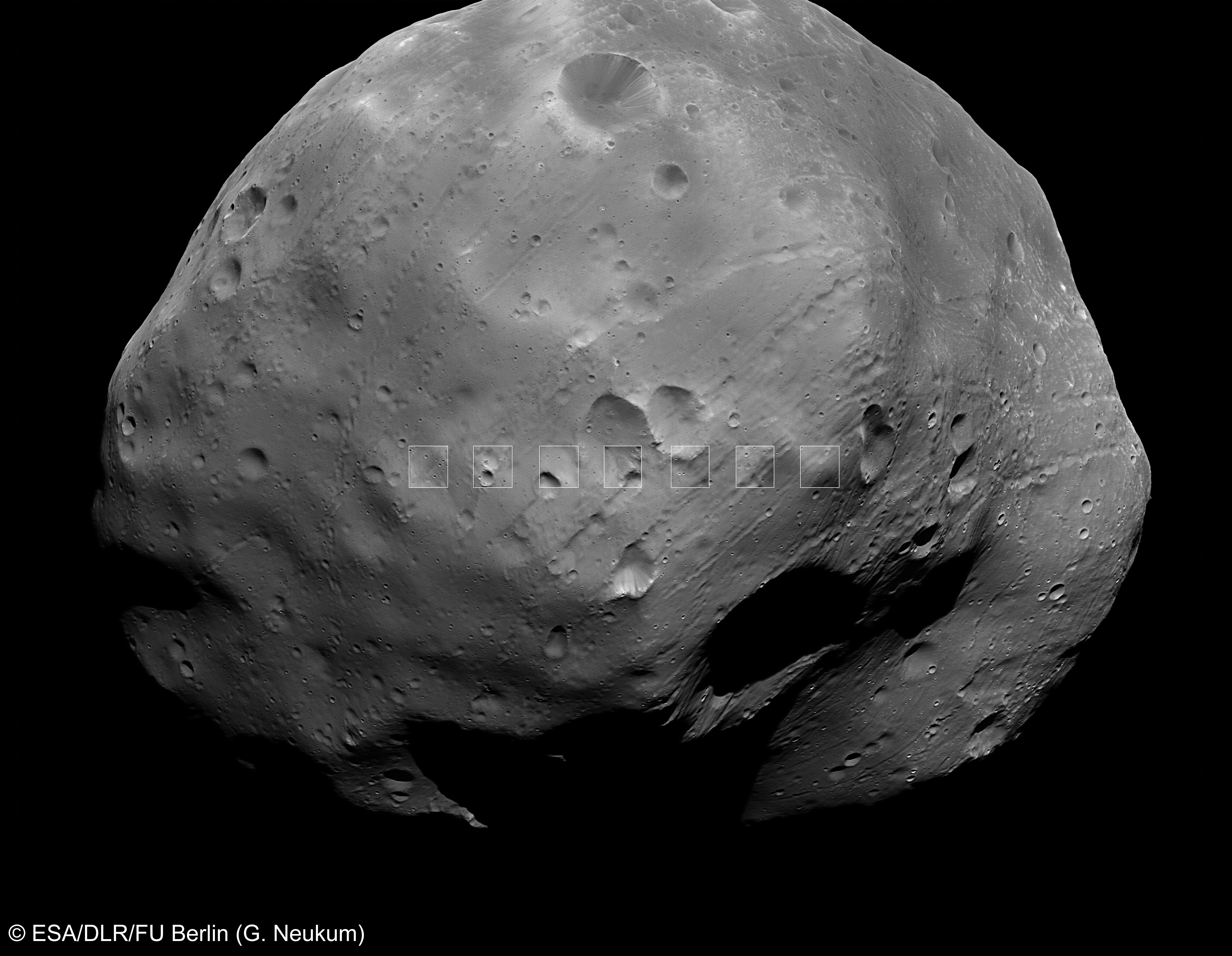

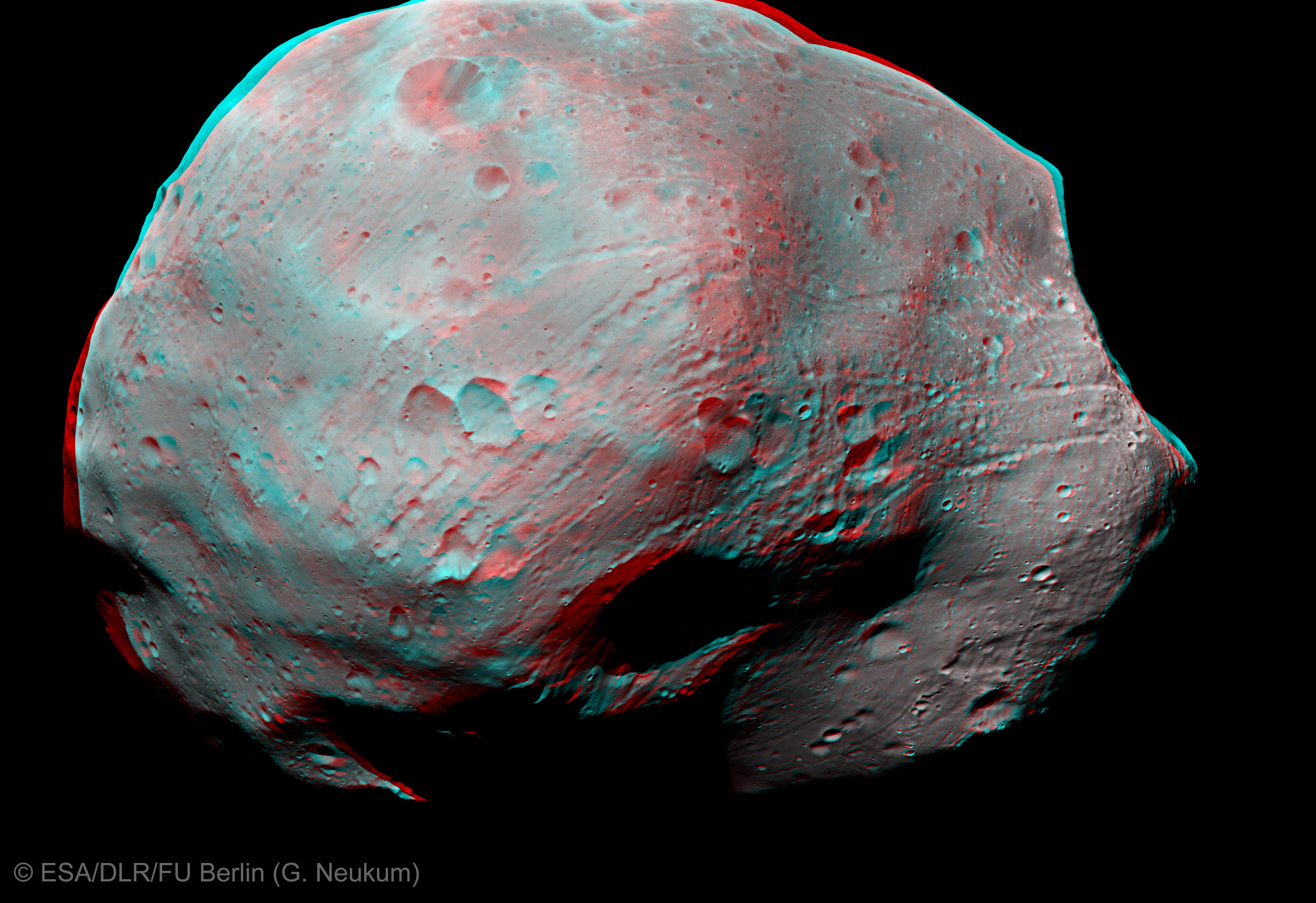
Here’s the on 3-D view, and the team explained that due to the stereo viewing geometry during the flyby a small part of the moon’s edge is only visible for the right eye resulting in odd 3D-perception in this area. This part has been slightly adjusted for better viewing. Also, for the left eye at the left edge of the image four small data gaps have been interpolated.

Source: ESA
Spectacular Eruptions of Mt. Etna in Sicily from Space and Earth

[/caption]
Spectacular eruptions from Mt Etna are spewing massive quantities of lava, smoke and ash many hundreds of meters high into the skies above the island of Sicily. Mt Etna is the most active volcano in Europe and one of the most active on all of Earth. The volcano rumbled to life again this week on the evening of January 12, 2011 and lit up the night sky. Mt Etna is 3350 meters high and located on the northeast coast of Sicily near the boot of Italy (see above, below).
Updated: comment or send me your Etna erupting photos/accounts to post below.
This fearsome natural wonder is providing an awe inspiring show from both Earth and Space. Local residents and lucky tourists nearby took stunning videos and photos (below) showing fountains of brilliant lava eruptions streaming mightily from the volcano.
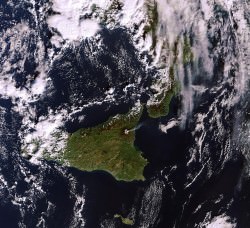
Click to Enlarge all images
Amazing photos from space were captured by Earth orbiting satellites from NASA and ESA. NASA’s Terra satellite took the above image on Jan. 11 as Mt Etna was spewing forth smoke or ash just prior to the volcanic eruptions on Jan. 12. The photo of Etna is NASA’s Earth Observatory Image of the Day, today, Jan. 15, 2011.
ESA’s Envisat likewise snapped a gorgeous view of the billowing plume of smoke rising to space (photo at left) and the international crew aboard the ISS, which currently includes Italian astronaut Paolo Nespoli. Perhaps he’ll send us a shot !
Local news and eyewitness accounts say that tremors from the volcano began increasing on Jan. 11. Emissions of volcanic gases and water vapor have been ongoing since late September 2010. The sounds of explosive tremors from deep inside were also detected months ago.
This sizzling hot video – “Etna at Maximum Activity” – is set to music and records the magnificent flowing streams of lava and the thunderous sounds of the crackling, explosive eruptions. Be sure to view at full screen, then just sit back and enjoy !
Plumes of volcanic ash from the eruptions spread across Sicily and forced the closure of the local Fontanarossa airport – nearby to the city of Catania, which is 24 kilometers away.
Rumblings of Mt Etna have been recorded in historical documents dating back to about 1500 BC.
Another short, dramatic video with the raw sounds of the eruption from a group of German tourists visiting the beautiful city of Taormina, Sicily
Eyewitness Description:
“Mount Etna erupted in the evening of January 12, 2011 for around four hours, providing an amazing scenery. We shot this unique video from Taormina on January 12, 2011 at 11.45 p.m. and uploaded it on YouTube.
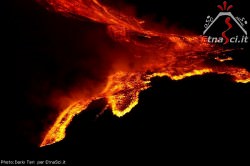
On the evening of 11th January 2011 an increase in volcanic tremor was recorded at the summit of the volcano. The recorded seismic activity reached a peak at 7 a.m. on 12th January when the source moved from north of NE crater to the SE crater. The eruption started with strombolian explosive activity at SE crater at around 9.p.m. Lava overflowed the eastern rim of SE crater and fed a flow that moved toward the western wall of the Valle del Bove (Valley of the oxen), an ancient huge uninhabited depression on the NE side of the volcano.
The Sicilian communities near the volcano were not threatened by this latest fascinating eruption. Best place to watch the fascinating eruptions of Mount Etna is the town of Taormina, nestled on a hill at 220 meters / 722 feet above the sea level and at a safe linear distance of approx. 28 Km / 17,4 miles from the top craters of the Sicilian volcano.”
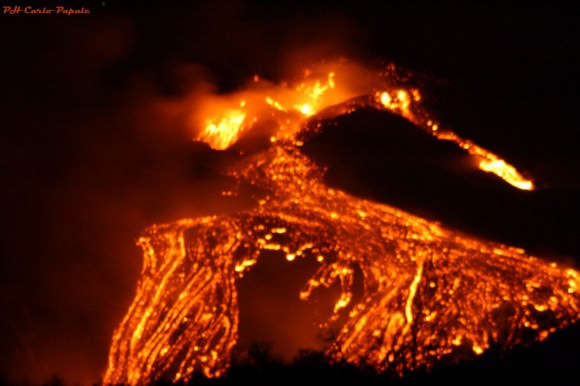
A few years back, I visited Mt Etna and was incredibly lucky to witness this spectacle of nature myself. It was an unforgettable experience to see the glowing red-orange colored lava flowing out from the bowels of the Earth. It was like a living being with circulating blood.
In the excitement, I did something that in retrospect was incredibly stupid. I stood on a ledge, perhaps 50 cm thick, right above the porthole of the scalding hot lava erupting from the earth beneath my feet. Many others did too.
Sicily is a lovely place of manmade and natural wonders. Don’t pass up an opportunity to see Etna aflame
Look at Etnaweb (in Italian, but Universal) for a fantastic collection of local photos and webcams of the eruption.
Volcanic eruptions are breathtaking events to behold. The residual plumes of smoke and ash can stay aloft for many years and can also effect how we see other astronomical events such as our view of solar and lunar eclipses.
For a more tranquil view of Earth and inspiration from Carl Sagan, click here
NASA’s Spirit robot is positioned next to an ancient and extinct volcanic feature on Mars. Learn more here
Can you envision a place hotter than Etna ? … A scorching, molten hellish world where the temperatures are unimaginably hot
Read about a newly detected Earth-sized planet with lava flows vastly hotter than Etna – or anywhere on Earth for that matter – in this story about a historic new discovery from NASA’s Kepler space telescope
Comment or send me your photos and eyewitness accounts of erupting Mt Etna
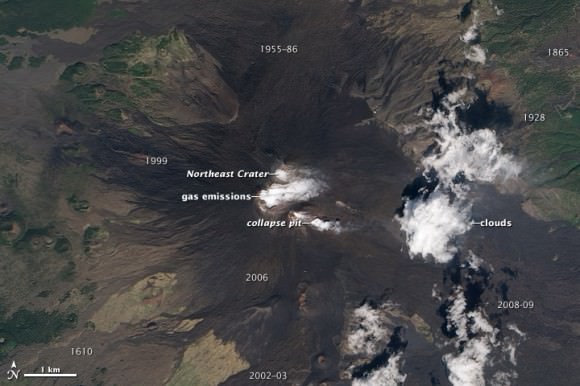
Water vapor and other volcanic gases overflow Etna’s summit craters, spilling out over the volcano’s upper slopes. A steam plume rises from a collapse pit that formed in late 2009, the newest volcanic feature on Etna. Dark lava flows from recent eruptions cover the peak, overlaying lighter, weathered flows from hundreds or thousands of years ago. (Numbers on the image indicate when a flow was erupted.) The oldest lavas are covered by green vegetation. Eruptive cones and fissures also dot the landscape. Frequent explosions deep within the Northeast Crater, which may presage an upcoming eruption, are audible at the summit. These explosions were occurring sporadically every few minutes, as recorded by nearby seismometers. This natural-color satellite image was acquired by the Advanced Land Imager (ALI) aboard (EO-1) on September 26, 2010.
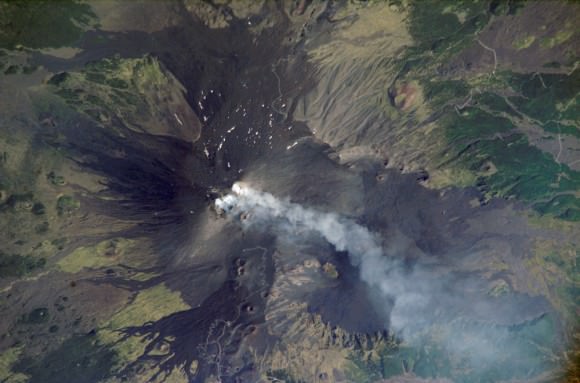
One of the most consistently active volcanoes in the world, Sicily’s Mount Etna has a historical record of eruptions dating back to 1500 BC. This astronaut photograph captures plumes of steam and possibly ash originating from summit craters on the mountain: the Northeast Crater and Central Crater, which includes two secondary craters (Voragine and Bocca Nuova). Locals heard explosions coming from the rim of the Northeast Crater on July 26, 2006, and the plumes shown in this image are likely a continuation of that activity. Credit: NASA.
Can China enter the international space family?
[/caption]
It has often been called a ‘100 billion boondoggle’ – yet it is also unquestionably one of the most successful international programs in human history. The International Space Station (ISS) is just now starting to produce some of the valuable science that was the station’s selling point from the beginning. However, this delay can be attributed to the numerous tragedies, economic woes and other issues that have arisen on a global scale through the course of the station’s construction.
The one thing that the world learned early on from the ISS experience is that space is a great forum for diplomacy. One time arch-rivals now work side by side on a daily basis.
With much of the nations of the world talking about stepped-up manned exploration efforts it would seem only natural that the successful model used on the space station be incorporated into the highly-expensive business of manned space exploration. If so, then one crucial player is being given a hard look to see if they should be included – China.
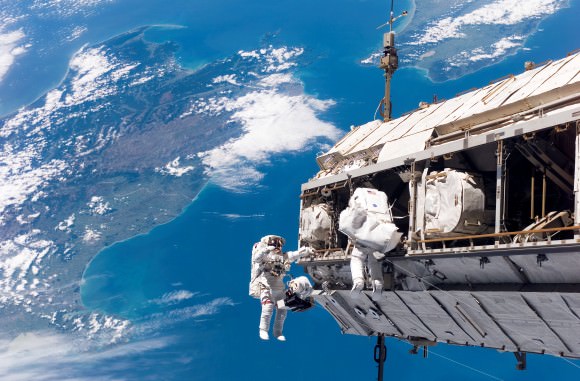
“International partnership in space exploration has proven its worth over the last decade. It would be a positive step if the other space-faring nation of the world, China, were to join the assembled space explorers of humankind as we march outward into the solar system,” said former NASA Space Shuttle Program Manager Wayne Hale who writes a popular blog about space matters.
China is only the third nation (behind Russia and the United States) to have a successful manned space program, having launched its first successful manned space flight in 2003. This first mission only had a single person onboard, and gave the world a new word – ‘taikonaut’ (taikong is the Chinese word for space). The country’s next mission contained two of these taikonauts and took place in 2005. The third and most current manned mission that China has launched was launched in 2008 and held a crew of three.

China has steadily, but surely, built and tested capabilities essential for a robust manned space program. Considering that China very ambitious goals for space this would seem a prudent course of action. China has stated publically that they want to launch a space station and send their taikonauts to the moon – neither of which are small feats.
China currently utilizes its Shenzhou spacecraft atop the Long March 2F booster from their Jiuquan facility. However, if China wants to accomplish these goals, they will need a more powerful booster. This has been part of the reason that the U.S. has been hesitant to include China due to concerns about the use of what are known as dual-use technologies (rockets that can launch astronauts can also launch nuclear weapons).

Some have raised concerns about the nation’s human rights track record. It should be noted however that Russia had similar issues before being included in the International Space Station program.
“In the early 1990’s, some at NASA thought having Russian cosmonauts on the Space Shuttle would mean giving away trade secrets to the competition,” said Pat Duggins, author of the book Trailblazing Mars. “It turned out Russian crew capsules saved the International Space Station when the Shuttles were grounded after the Columbia accident in 2003. So, never say never on China, I guess.”
Duggins is not the only space expert who feels that China would make a good companion when mankind once again ventures out past low-Earth-orbit.
“One of the findings of the Augustine Commission was that the international framework that came out of the ISS program is one of the most important. It should be used and expanded upon for use in international beyond-LEO human space exploration,” said Dr. Leroy Chiao a veteran of four launches and a member of the second Augustine Commission. “My personal belief is that countries like China, which is only the third nation able to launch astronauts, should be included. My hope is that the politics will align soon, to allow such collaboration, using the experience that the US has gained in working with Russia to bring it about.”
Not everyone is completely convinced that China will be as valuable an asset as the Russians have proven themselves to be however.
“It is an interesting scenario with respect to the Chinese participation in an international effort in space. The U.S. has made some tremendous strides in terms of historical efforts to bridge the gap with the Russians and the results have been superb,” said Robert Springer a two-time space shuttle veteran. “The work that has resulted in the successful completion of the International Space Station is an outstanding testimony to what can be done when political differences are set aside in the interest of International cooperation. So, there is a good model of how to proceed, driven somewhat by economic realities as well as politics. I am not convinced that the economic and political scenario bodes well for similar results with the Chinese. It is a worthwhile goal to pursue, but I am personally not convinced that a similar outcome will be the result, at least not in the current environment.”
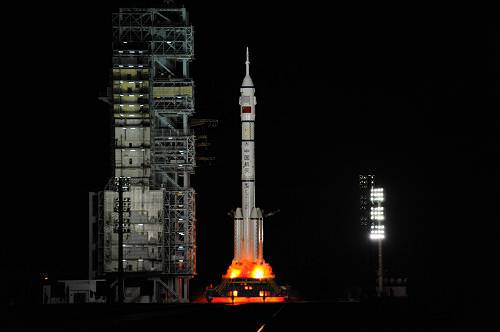
Great View! January 4 Solar Eclipse As Seen From Space
Here’s a unique view of the January 4 partial solar eclipse: ESA’s sun-watching microsatellite Proba-2 captured the conjunction of the spheres as the Sun, Moon and Earth all lined up in front of it. Shortly after the Moon partially blocked Proba-2’s view of the Sun, the satellite flew into Earth’s shadow. At that point – when the video seen here goes dark – the Sun, Moon, Earth and Proba-2 were all on the same line in space.
“This is a notable event,” said Bogdan Nicula of the Royal Observatory of Belgium (ROB), who calculated where and when this double-eclipse would happen. “It is a nice exercise to model the orbit and relative positions of all three celestial bodies.”
Continue reading “Great View! January 4 Solar Eclipse As Seen From Space”
Highlights of 2010 from the European Space Agency
It has been another great year in space, and the European Space Agency has put together a video highlight reel for 2010. They look at the achievements in different areas, including Earth Observation, Science, Human Spaceflight and Telecommunications. From the launch of Cryosat to the Planck sky scan, from Node 3 Cupola completing the ISS to Paolo Nespoli launching on the Soyuz to the ISS, from the Rosetta flyby of asteroid Lutetia to the launch of Hylas providing broadband for Europe.
Cassini Instruments Offline Until Nov. 24
[/caption]
NASA announced that the Cassini spacecraft in orbit around Saturn will have its suite of scientific cameras offline until at least Nov. 24. Cassini is currently in safe mode due to a malfunction in the spacecraft’s computer. This shut down all non-essential systems to prevent any further damage happening to the spacecraft. This means that all scientific efforts on the mission have been suspended until the problem can be resolved.
Although these seem like severe issues, mission managers are relatively sure that they will have no serious long-term effects on the overall mission. Cassini entered safe mode around 4 p.m. PDT (7 p.m. EDT) on Tuesday, Nov. 2. Managers want to review what took place onboard Cassini, correct what they can and ensure that this doesn’t happen again. Programmers have already ascertained that the likely cause of the problem was a faulty program code line that made its way back to Cassini.
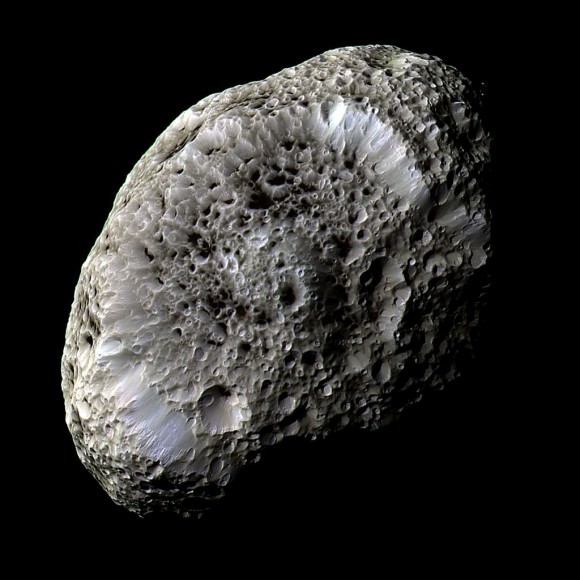
Ordinarily when faulty code is sent from Earth to Saturn, Cassini would reject any coding that is deemed ‘bad.’ However, this did not happen in this case, causing the problem. Controllers are not totally convinced that a solar fare didn’t corrupt the code on its way out to the gas giant.
“The spacecraft responded exactly as it should have, and I fully expect that we will get Cassini back up and running with no problems,” said Bob Mitchell, Cassini’s program manager at JPL. “Over the more than six years we have been at Saturn, this is only the second safing event. So considering the complexity of demands we have made on Cassini, the spacecraft has performed exceptionally well for us.”
Cassini launched from Cape Canaveral Air Force Station back in 1997 atop a Titan rocket. In the thirteen years since that time it has entered ‘safe’ mode a total of six times.
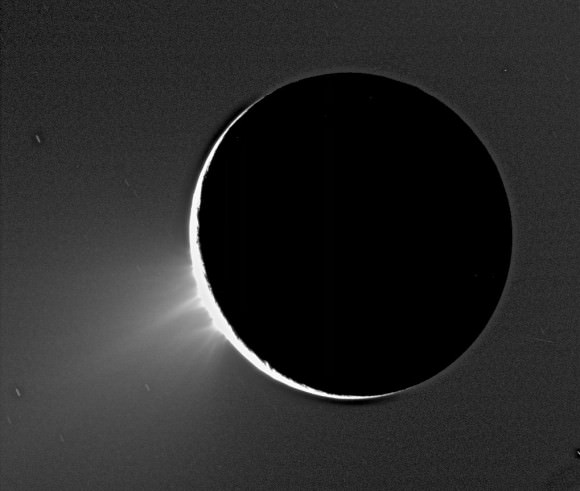
The largest loss for Cassini’s planners is this will cost them a flyby of Titan, one of Saturn’s moons and the only moon in the solar system with an appreciable atmosphere. All is not lost however, as there are still some 53 possible flybys of the moon currently scheduled. The mission is currently planned to last until 2017.
The Cassini-Huygens mission is a cooperative program managed between NASA, the European Space Agency (ESA) and the Italian Space Agency. JPL, a division of the California Institute of Technology (Caltech) manages the Cassini program for NASA’s Science Mission Directorate located in Washington, D.C.
Rosetta Uncovers a Thick, Dusty Blanket on Lutetia
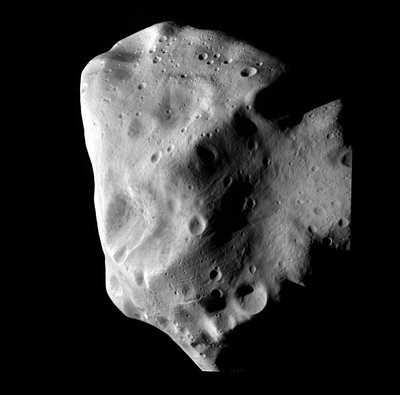
[/caption]
If you think that asteroids are boring, unchanging rocks floating in space waiting only to crop up in bad science fiction films, think again. Images and data that are being returned from various asteroid flybys – such as those by the Rosetta spacecraft and Hayabusa sample return mission – show that asteroids are dynamic, changing miniature worlds unto themselves.
During the recent flyby of the asteroid 21-Lutetia in July, the ESA’s Rosetta spacecraft took an amazing amount of data. After combing through all of this data over the past few months, astronomers have calculated that the asteroid is covered in a 2000-foot (600 meter)-thick blanket of rocks and dust called regolith. This dust is not unlike the outer layer of the Earth’s Moon, consisting of pulverized material that has accumulated over billions of years.
Rosetta is on a course to meet up with the comet 67P/Churyumov-Gerasimenko in 2014, but the spacecraft is no stranger to asteroid visits – on September 6th, 2008, Rosetta made its closest approach of the asteroid 2867-Steins. During this brief visit, Rosetta came within 500 miles (800km) of the small, diamond-shaped asteroid. Among the discoveries made were a chain of impact craters that were likely caused by the collision with a meteoroid stream, or the impact with another small body.
It then approached 21-Lutetia on July 10th of 2010, monitoring the asteroid with 17 instruments on board the spacecraft.
Rosetta took a number of images of the flyby, as well as examining the asteroid with electromagnetic detectors that covered the gamut from the UV to radio waves. Here’s a short animation showing the flyby:
Dr. Rita Schulz from the ESA Research and Scientific Support Department in the Netherlands presented this new information about 21-Lutetia’s regolith today at the Division for Planetary Sciences meeting in Pasadena, CA. She said that the regolith on the asteroid has been determined to be about 2000 feet (600 meters) thick, and that it resembles the regolith on the Moon. Images from the flyby reveal landslides, boulders, ridges, and other kinds of different geologic (or asterologic?) features.
21-Lutetia was determined by the July flyby to have a large, bowl-shaped impact crater on its surface, as well as an abundance of smaller craters. The thick covering of dust “softens” the sharper edges of impact craters in many of the images taken. Whether or not most asteroids of this size are covered in a similar blanket of material remains to be seen.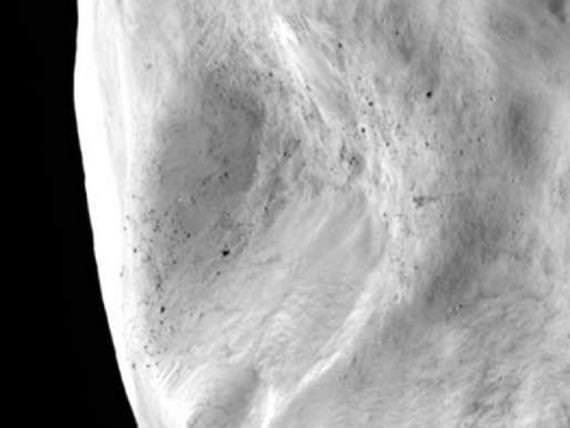
In understanding more about asteroids and comets, astronomers are better able to hone their model of how our Solar System formed. By studying the composition and frequency of impacts of various asteroids, they can improve their data of just how things have changed since the primordial Solar System.
You can bet your boulders that Rosetta isn’t the only spacecraft to be making multiple rendezvous missions with the smaller denizens of our Solar System. Close flybys, impacts and landings on asteroids and comets are becoming almost commonplace for spacecraft.
There’s the Deep Impact mission, which slammed a huge copper weight into the comet Tempel 1, and has since been renamed EPOXI and is set to approach the comet Hartley 2. The upcoming approach of Vesta and Ceres by the Dawn mission is very much anticipated, and of course the recent success of the Hayabusa asteroid explorer has been a terrific tale of just how much we stand to learn from the trail of small celestial cairns that lead into our past.
Source: ESA, DPS Press Release
Planck, XMM Newton Find New Galaxy Supercluster
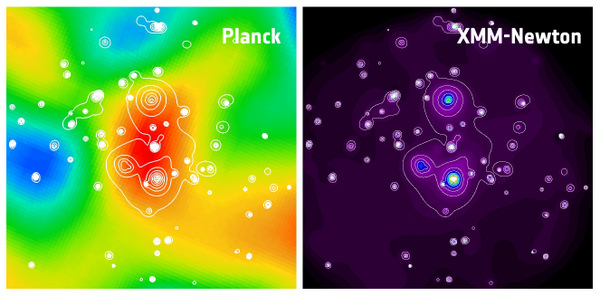
[/caption]
Scanning the sky in microwaves, the Planck mission has obtained its very first images of galaxy clusters, and found a previously unknown supercluster which is among one of the largest objects in the Universe. The supercluster is having an effect on the Cosmic Microwave Background, and the observed distortions of the CMB spectrum are used to detect the density perturbations of the universe, using what is called the Sunyaev–Zel’dovich effect (SZE). This is the first time that a supercluster has been discovered using the SZE. In a collaborative effort, the XMM Newton spacecraft has confirmed the find in X-rays.
Sunyaev-Zel’dovich Effect (SZE) effect describes the change of energy experienced by CMB photons when they encounter a galaxy cluster as they travel towards us, in the process imprinting a distinctive signature on the CMB itself. The SZE represents a unique tool to detect galaxy clusters, even at high redshift. Planck is able to look across nine different microwave frequencies (from 30 to 857 GHz) to remove all sources of contamination from the CMB, and over time, will provide what is hoped to be the sharpest image of the early Universe ever.
“As the fossil photons from the Big Bang cross the Universe, they interact with the matter that they encounter: when travelling through a galaxy cluster, for example, the CMB photons scatter off free electrons present in the hot gas that fills the cluster,” said Nabila Aghanim of the Institut d’Astrophysique Spatiale in Orsay, France, a leading member of the group of Planck scientists investigating SZE clusters and secondary anisotropies. “These collisions redistribute the frequencies of photons in a particular way that enables us to isolate the intervening cluster from the CMB signal.”
Since the hot electrons in the cluster are much more energetic than the CMB photons, interactions between the two typically result in the photons being scattered to higher energies. This means that, when looking at the CMB in the direction of a galaxy cluster, a deficit of low-energy photons and a surplus of more energetic ones is observed.
The SZE signal from the newly discovered supercluster arises from the sum of the signal from the three individual clusters, with a possible additional contribution from an inter-cluster filamentary structure. This provides important clues about the distribution of gas on very large scales which is, in turn, crucial also for tracing the underlying distribution of dark matter.
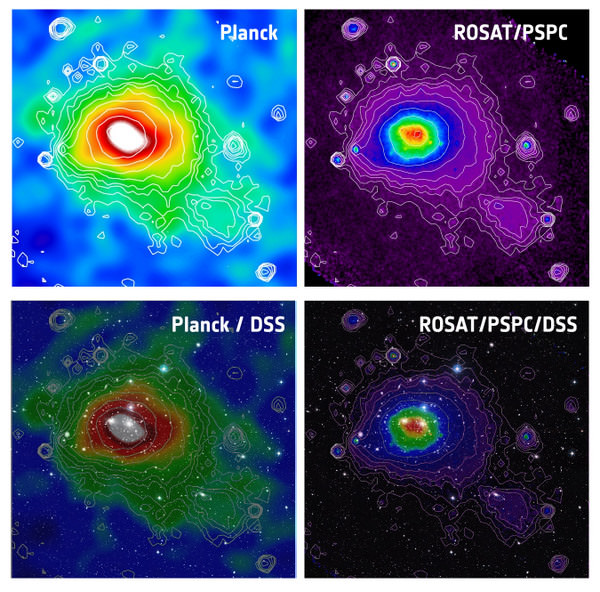
“The XMM-Newton observations have shown that one of the candidate clusters is in fact a supercluster composed of at least three individual, massive clusters of galaxies, which Planck alone could not have resolved,” said Monique Arnaud, who leads the Planck group following up sources with XMM-Newton.
“This is the first time that a supercluster has been discovered via the SZE,” said Aghanim. “This important discovery opens a brand new window on superclusters, one which complements the observations of the individual galaxies therein.”
Superclusters are large assemblies of galaxy groups and clusters, located at the intersections of sheets and filaments in the wispy cosmic web. As clusters and superclusters trace the distribution of both luminous and dark matter throughout the Universe, their observation is crucial to probe how cosmic structures formed and evolved.
The first Planck all-sky survey began in mid-August 2009 and was completed in June 2010. Planck will continue to gather data until the end of 2011, during which time it will complete over four all-sky scans.
The Planck team is currently analyzing the data from the first all-sky survey to identify both known and new galaxy clusters for the early Sunyaev-Zel’dovich catalogue, which will be released in January of 2011.
Source: ESA
Herschel Finds Water Around a Carbon Star
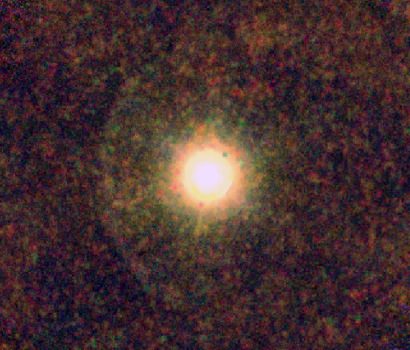
[/caption]
There’s something strange going on around the red giant star CW Leonis (a.k.a. IRC+10216). Deep within the star’s carbon-rich veil, astronomers have detected water vapor where no water should be.
CW Leonis is similar in mass to the sun, but much older and much larger. It is the nearest red giant to the sun, and in its death throes it has hidden itself in a sooty, expanding cloud of carbon-rich dust. This shroud makes CW Leonis almost invisible to the naked eye, but at some infrared wavelengths it is the brightest object in the sky.
Water was originally discovered around CW Leonis in 2001 when the Submillimeter Wave Astronomy Satellite (SWAS) found the signature of water in the chilly outer reaches of the star’s dusty envelope at a temperature of only 61 K. This water was assumed to be evidence for vaporizing comets and other icy objects around the expanding star. New observations with the SPIRE and PACS spectrometers on the Herschel Space Observatory reveal that there’s something much more surprising going on.
“Thanks to Herschel’s superb sensitivity and spectral resolution, we were able to identify more than 60 lines of water, corresponding to a whole series of energetic levels of the molecule,” explains Leen Decin from the University of Leuven and leader of the study. The newly-detected spectral lines indicate that the water vapor is not all in the cold outer envelope of the star. Some of it is much closer to the star, where temperatures reach 1000 K.
No icy fragments could exist that close to the star, so Decin and colleagues had to come up with a new explanation for the presence of the hot water vapor. Hydrogen is abundant in the envelope of gas and dust surrounding carbon stars like CW Leonis, but the other building block of water, oxygen, is typically bound up in molecules like carbon monoxide (CO) and silicon monoxide (SiO). Ultraviolet light can split these molecules, releasing their stored oxygen, but red giant stars don’t make much UV light so it has to come from somewhere else.
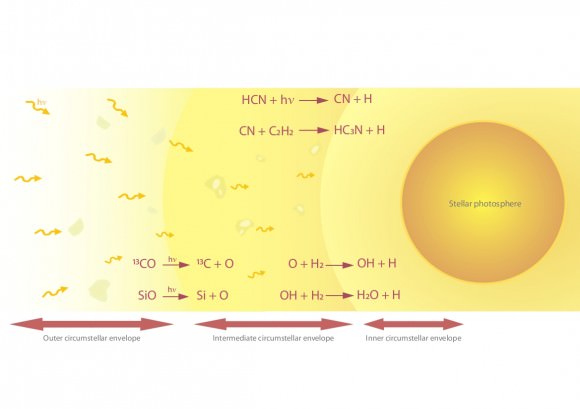
The dusty envelopes around carbon stars are known to be clumpy, and that turns out to be the key to explaining the mysterious water vapor. The patchy structure of the shroud around CW Leonis lets UV light from interstellar space into the depths of the star’s envelope. “Well within the envelope, UV photons trigger a set of reactions that can produce the observed distribution of water, as well as other, very interesting molecules, such as ammonia (NH3),” says Decin. “This is the only mechanism that explains the full range of the water’s temperature.”
In the coming months, astronomers will test this hypothesis by using Herschel to search for evidence of water near other carbon stars.

